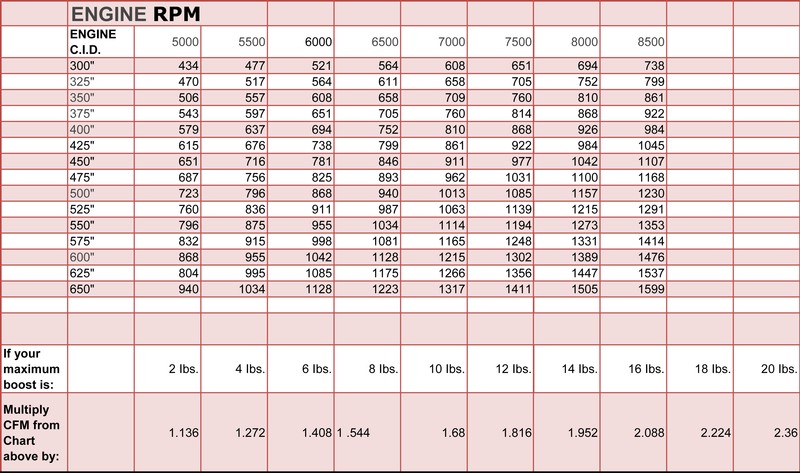RBS is asked how much carburation is required for a supercharged engine? In other words, how big of a carburetor(s) will the engine require to avoid limiting the airflow into the supercharger. This is determined by a formula that takes into consideration the cubic inch displacement of the engine, the maximum RPM at which it will be operated, and the boost at the RPM. Any increase or decrease of these criteria will require a corresponding increase or decrease in carburetor CFM.
To help you determine what size carburetor(s) will be best suited to your application we have provided the chart on the next page. By following the two easy steps outlined you can figure out your own airflow requirement. One word of caution about carburetors before you begin. This chart address airflow only. It is not an indicator of fuel delivery. Insuring that your engine has an adequate supply of fuel to go along with the air you are providing, regardless of the size of carburetor(s) you are using, is the responsibility of the tuner.
CARBURETION REQUIREMENT FOR A SUPERCHARGED ENGINE
To calculate the CFM requirement of your supercharged engine simply follow these two easy step.
STEP 1) From the chart below match the cubic inch and maximum RPM of your engine to find the airflow requirement of a 100% volumetric efficient non-supercharged engine.
STEP 2) Multiply this figure by the number shown in the lower chart that corresponds with your maximum boost.
EXAMPLE: for a 500 cubic inch engine at 7000 RPM with a maximum boost of 10 pounds. 1013 x 1.680 = 1701 CFM ( A pair of 850 CFM or larger carbs would be well suited to the above example)

View this chart on a seperate page